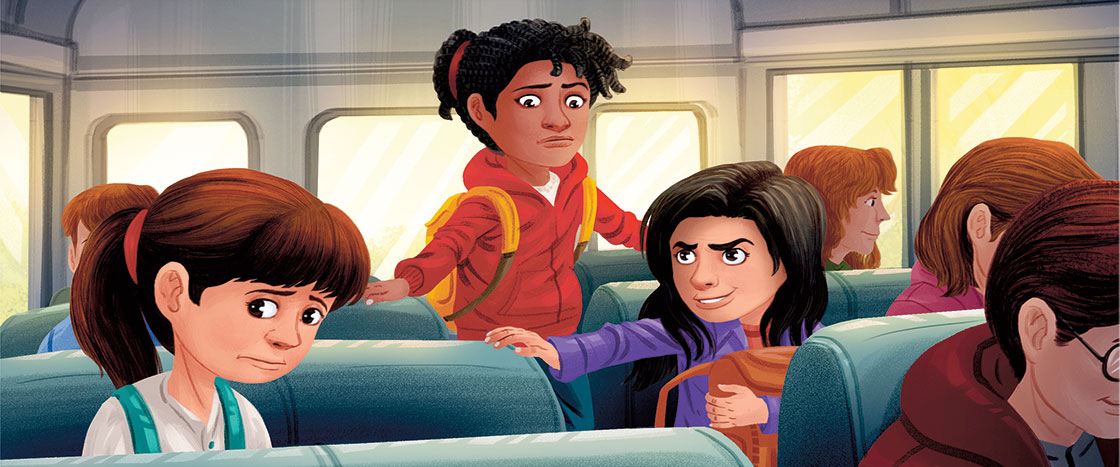You’ve met girls like Mia—bossy girls who seem to have mysterious powers. Mia controls her friends like a wizard with an invisible wand. What she does, they do. When she decides someone is “out,” well, that’s that.
Like Ellie, a girl on her school bus.
One day Mia decided that nobody should sit near Ellie. So nobody did. Mia thought it was so funny how Ellie got on the bus and looked around for a seat, and how no one made room.
What Mia was doing—making another kid feel like a squashed bug—is bullying. There’s also a name for Mia’s and Ellie’s friends, who saw what was going on and did nothing. They’re known as bystanders.
In nearly 90 percent of all bullying episodes, there are bystanders; 75 percent of the time, those witnesses do nothing to stop the bullying.
Grace, one of Mia’s friends on the bus, had a choice: stay out of it, or step in and help.
You’ve met girls like Mia—bossy girls who seem to have strange powers. Mia controls her friends like a wizard with a wand. What she does, they do. When she decides someone is “out,” well, that’s that.
Like Ellie, a girl on her school bus.
One day Mia decided that no one should sit near Ellie. So no one did. Ellie got on the bus and looked around for a seat. No one made room. Mia thought it was funny.
Mia made Ellie feel like a squashed bug. That’s bullying. There’s also a name for the kids who saw what was going on and did nothing. They’re called bystanders.
Nine times out of 10, when someone is bullied, there are witnesses. Three times out of four, those people do nothing to stop the bullying.
Grace, one of Mia’s friends on the bus, had a choice: Stay out of it, or step in and help.
Tú conoces a niñas como Mia, chicas mandonas que parecen poseer misteriosos poderes. Mia controla a sus amigos como una maga con una varita invisible. Ellos hacen lo que ella haga. Cuando decide sacar a alguien del grupo, bueno, se acabó.
Como le pasó a Ellie, una niña en el autobús escolar.
Un día, Mia decidió que nadie debía sentarse cerca de Ellie. Y todos obedecieron. Mia pensaba que era divertido ver a Ellie subir al autobús, buscar un asiento y que nadie le dejara un lugar.
Lo que Mia hacía (hacer que otra persona se sienta como un insecto aplastado) se conoce como bullying, o sea, abuso. También hay otro nombre para los amigos de Mia y Ellie, que vieron lo que estaba pasando y no hicieron nada. Se conocen como espectadores.
En cerca del 90 por ciento de los episodios de abuso, hay espectadores. En el 75 por ciento de las veces, esos espectadores no hacen nada para detener el abuso.
Grace, una de las amigas de Mia en el autobús, tenía una opción: no involucrarse o intervenir y ayudar.


